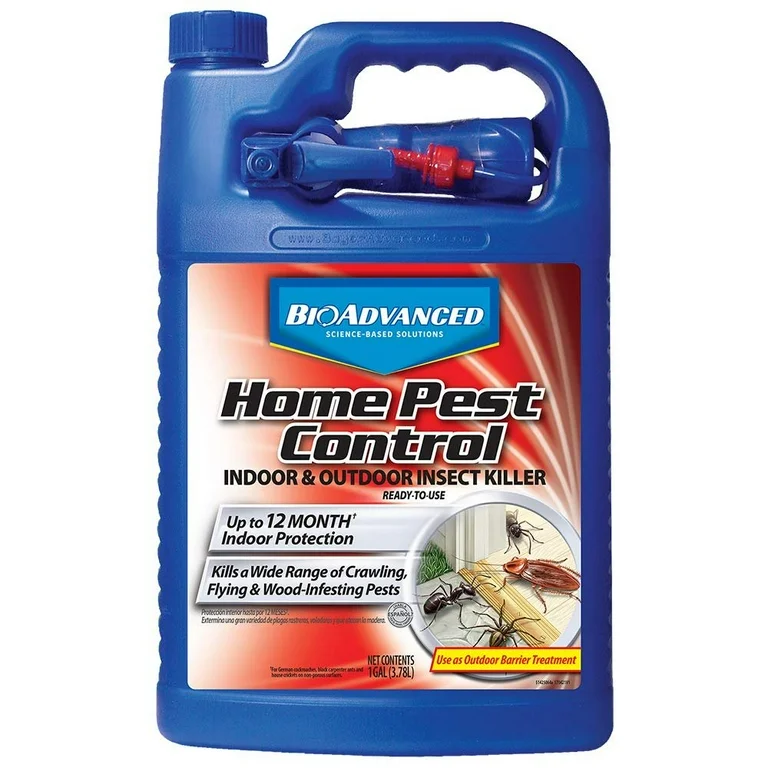Top Quality A1 Pest Control Services Charlotte - Safeguard Your Home
Top Quality A1 Pest Control Services Charlotte - Safeguard Your Home
Blog Article
Bed Pest Therapy Malfunction: Comparing Chemical Vs. Non-Chemical Solutions
In the realm of insect control, specifically when handling the relentless concern of bed pests, the choice between chemical and non-chemical treatment services can be a critical one. Both techniques provide distinct benefits and downsides, affecting variables such as performance, safety and security considerations, and general price. By analyzing the nuanced information of each method, a clearer understanding of which course to go after in addressing a bed insect problem can be attained.
Efficiency of Chemical Therapies
Chemical therapies for bed insect invasions have been extensively identified for their potent and fast efficacy in eradicating these parasites. When taking into consideration the efficiency of chemical treatments, it is essential to recognize that they can supply a extensive and fast option to a bed pest issue.
Additionally, chemical therapies have the benefit of using recurring effects, suggesting that they can remain to eliminate bed insects even after the first application. This residual activity is especially helpful in combating any possible re-infestations. Furthermore, the quick activity of chemical treatments can bring alleviation to individuals dealing with severe bed pest problems, enabling them to reclaim control of their living areas swiftly.
Safety And Security Interest In Chemical Solutions
One important facet that requires careful consideration when making use of chemical options for bed bug therapy is ensuring the safety of owners and the setting. Direct exposure to certain chemicals used in bed insect therapies can lead to respiratory issues, skin irritation, or various other adverse reactions, specifically in people with pre-existing problems or level of sensitivities.
Additionally, the environmental effect of chemical options is one more considerable consideration. Some chemicals utilized in bed insect treatments might be dangerous to advantageous insects, wildlife, and ecosystems if they seep into the dirt or water supply. It is vital to use chemical therapies carefully, following safety and security guidelines, and taking into consideration much less hazardous options to mitigate these risks and make certain the secure and reliable management of bed insect invasions.
Advantages of Non-Chemical Approaches
Taking into consideration the possible safety concerns and ecological effect connected with chemical options for bed bug therapy, exploring non-chemical methods presents a promising option with numerous distinct advantages. Non-chemical techniques offer a more secure alternative for families, specifically those with family pets, people, or kids conscious extreme chemicals. These strategies eliminate the threats of exposure to harmful substances, lowering the possibility for adverse health and wellness results. Moreover, non-chemical therapies are eco pleasant, as they do not contribute to air or water air pollution, making them a lasting choice for bug control.
In addition, non-chemical remedies can be efficient in targeting bed insects, consisting of hard-to-reach areas where chemical treatments might not penetrate. Approaches such as warmth treatment, vacuuming, steam cleaning, and mattress encasements give thorough eradication without making use of unsafe chemicals. Moreover, non-chemical approaches can be much less turbulent, needing very little prep work and allowing for quicker reentry right into dealt with areas. Generally, selecting non-chemical bed pest treatment approaches not just focuses on safety and security and environmental management however also makes sure reliable and comprehensive parasite control.
Limitations of Non-Chemical Treatments

Furthermore, non-chemical treatments often require numerous applications to achieve effective eradication. This can be time-consuming and may not always guarantee full elimination of all bed pests and their eggs, especially in hard-to-reach or covert places.
Moreover, the success of non-chemical therapies greatly counts on appropriate execution and thoroughness, which pest control mice can be challenging for individuals without professional expertise. Poor application of non-chemical approaches may cause incomplete elimination, causing consistent invasions and the need for added treatments.
For that reason, while non-chemical therapies have their advantages, it is vital to acknowledge these constraints and consider them when figuring out the most effective technique for handling bed insect problems.
Price Comparison: Chemical Vs. Non-Chemical Options
Provided the restrictions connected with non-chemical treatments, a vital aspect to examine in the context of bed insect management is the price comparison between chemical and non-chemical choices. In comparison, non-chemical treatments like warm treatment or steam can be extra expensive, with prices varying from $1,000 to $6,000 for an entire home. While the initial expense of chemical treatments might appear lower, multiple treatments may be required to totally get rid of the invasion, potentially enhancing the overall cost.
Final Thought

Thinking about the possible safety problems and environmental impact associated with chemical options for bed pest therapy, exploring non-chemical methods offers an appealing option with numerous distinctive benefits.Provided the restrictions linked with non-chemical treatments, a vital facet to assess in the context of bed pest administration is the price comparison between chemical and non-chemical options. In contrast, non-chemical treatments like warmth treatment or heavy steam can be much more costly, with expenses varying from $1,000 to $6,000 for an entire home. While the first price of chemical therapies may seem reduced, multiple therapies may be called for to completely get rid of the infestation, potentially raising the overall expense.In final thought, when comparing chemical and non-chemical bed insect therapy choices, it is crucial to take into consideration performance, safety and security, advantages, constraints, and cost.
Report this page